How to Test a Watch Battery with a Multimeter (Guide)

Small watch batteries also known as coin batteries and small single cell batteries can be used with various electronics. You can find these round shape batteries on watches, toys, calculators, remotes, and even on desktop computer motherboards. Commonly known as coin or button types. Usually, a button battery is smaller than a coin battery. Regardless of size or the type, you might have to test the watch battery voltage.
So, today I’m planning to teach you how to test a watch battery with a multimeter.
In General to test battery voltage, first, set the multimeter to the DC voltage setting. Place the multimeter red lead on the positive side of the battery. Then, place the black lead on the negative side of the battery. If the battery is fully charged, the multimeter will show a reading close to 3V.
Different Voltages of Watch Batteries
There are three different types of watch batteries available in the market. They have different types of voltages, and the size is different too. These variations can be identified as coin or button battery types. So, here are the voltages of those three batteries.
| Battery Type | Initial Voltage | Battery Replacing Voltage |
| Lithium | 3.0V | 2.8V |
| Silver Oxide | 1.5V | 1.2V |
| Alkaline | 1.5V | 1.0V |
Keep in mind: According to the above chart, when a Lithium battery reaches 2.8V, you should replace it. However, this theory does not apply to the common Renata 751 Lithium battery. It has an initial voltage of 2V.
Things to Know Before Testing
In this section, you’ll be able to learn two methods to test battery voltage.
- Initial Testing
- Testing with Load
Initial testing is a quick and easy method to test the voltage of a watch battery. But when testing with load, you can observe how the particular battery reacts to the load.
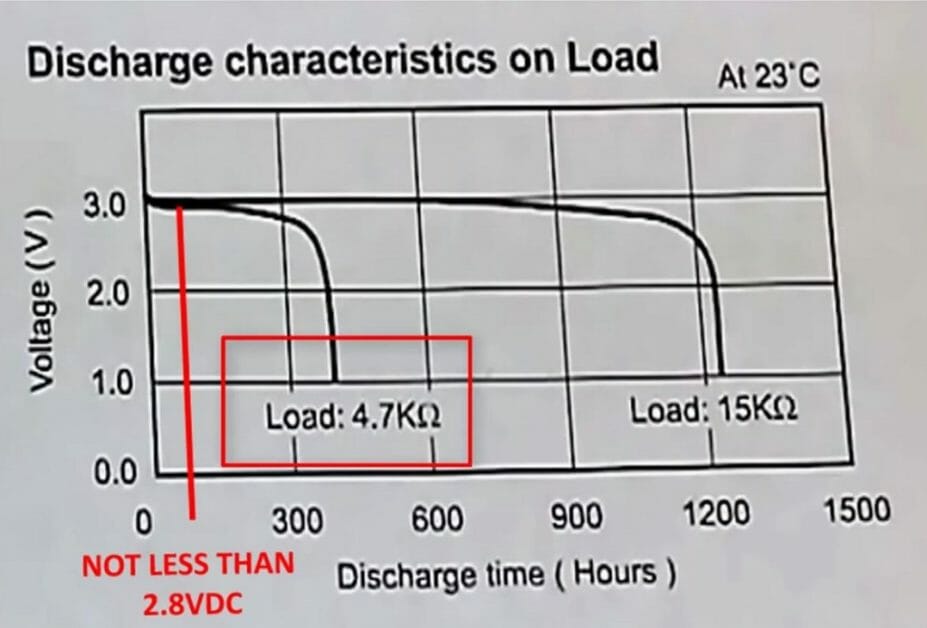
In this case, 4.7KΩ of load will be applied to the battery. This load might vary according to the type and the size of the battery. Choose the load according to the discharge characteristics of the battery. (1)
Things Needed
- Digital multimeter
- Variable resistance box
- Set of red and black connectors
Method 1 – Initial Testing
This is a simple three-step testing process that requires only a multimeter. So, let’s get started.
Step 1- Set Up the Multimeter
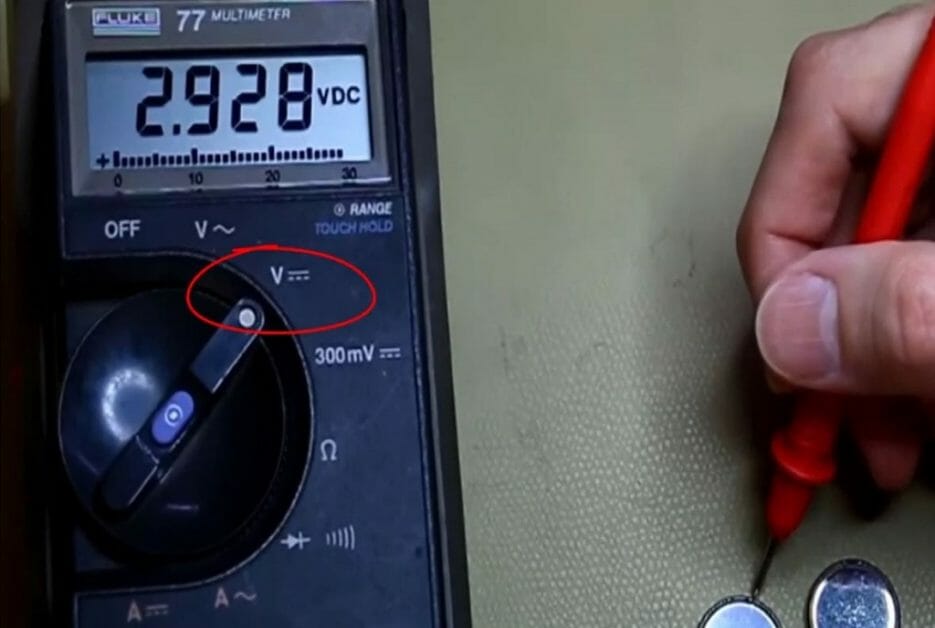
First and foremost, set the multimeter to DC voltage settings. To do that, turn the dial to the VDC symbol.
Step 2 – Placing Leads
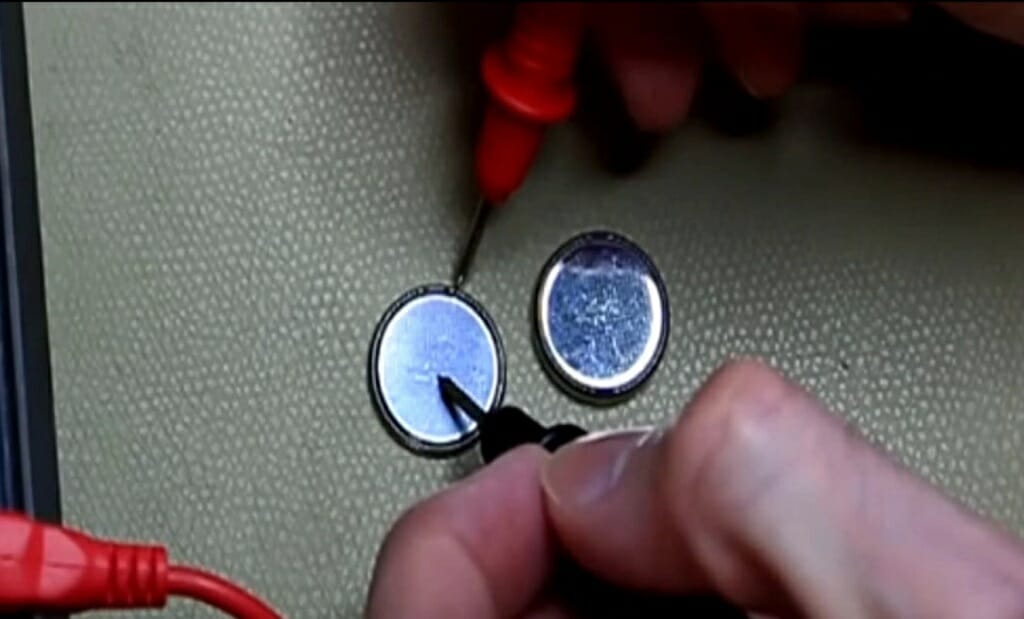
Then, connect the multimeter red lead to the positive side of the battery. Next, connect the black lead to the negative side of the battery.
Identifying the Positive and Negative Sides of a Watch Battery
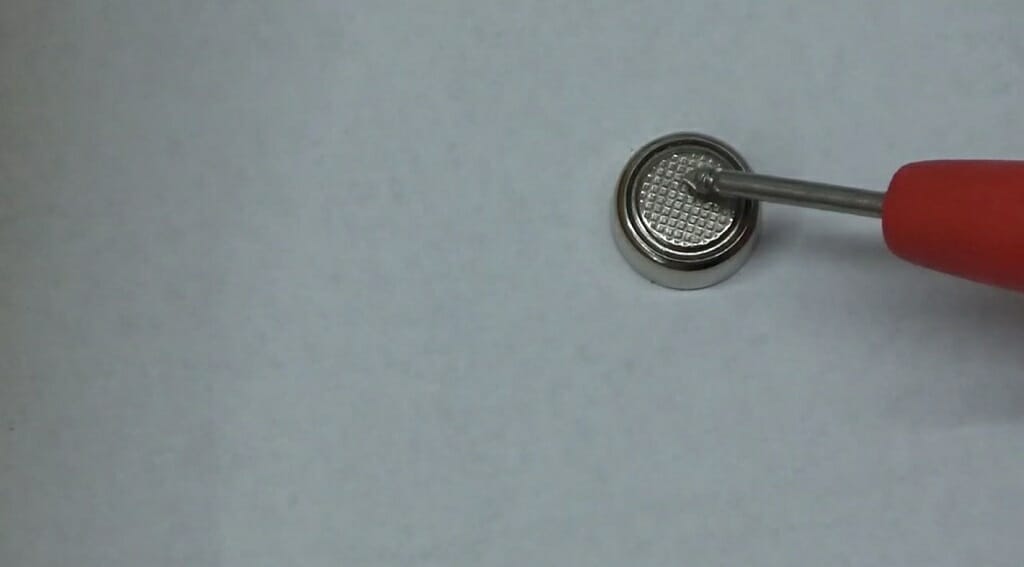
On most watch batteries, there should be a plain side. That is the negative side.
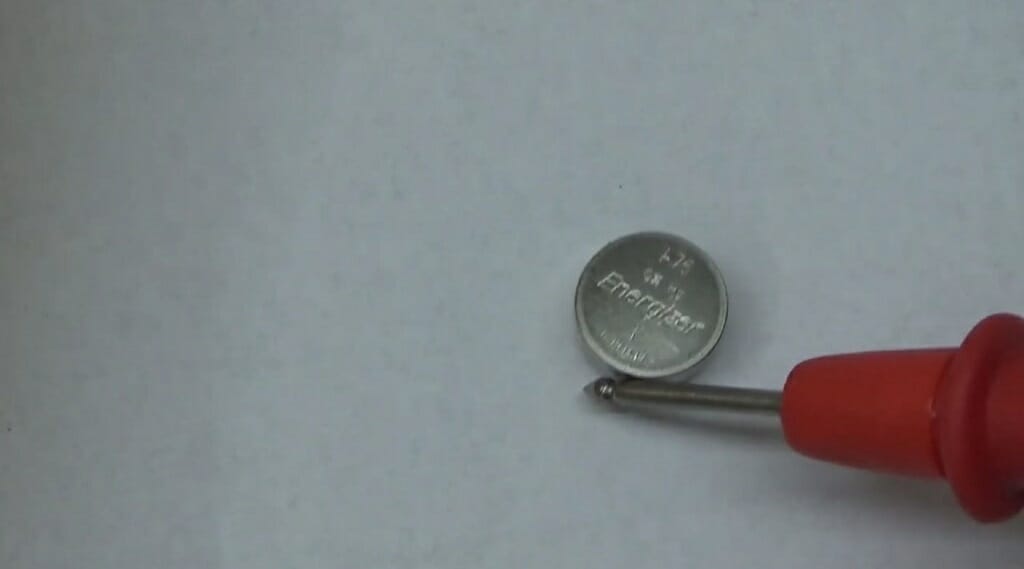
The other side displays a plus sign. That is the plus side.
Step 3 – Understanding the Readings
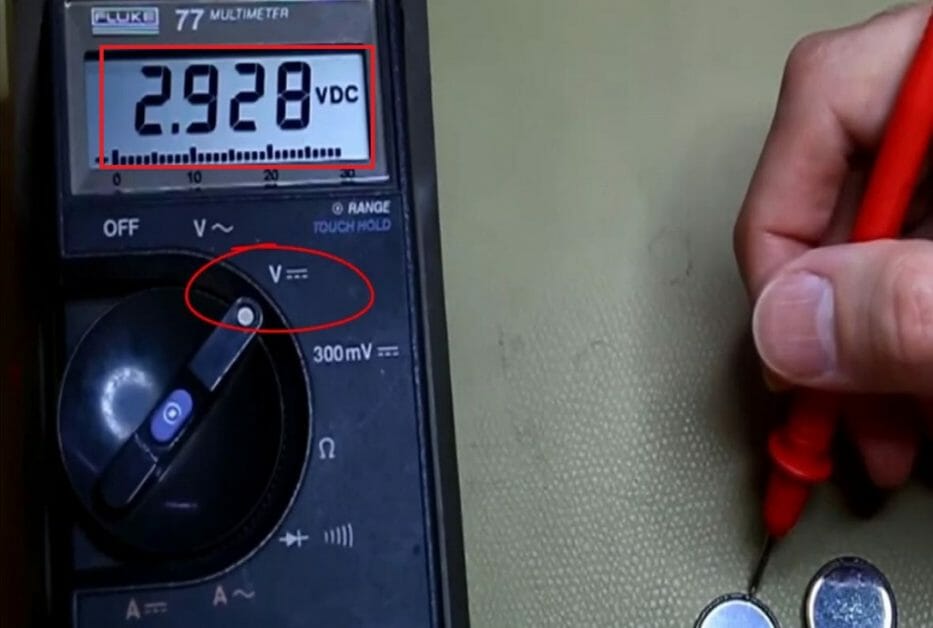
Now, check the reading. For this demonstration, we use a Lithium battery. So, the reading should be close to 3V, given that the battery is fully charged. If the reading is below 2.8V, you might need to replace the battery.
Method 2 – Testing with Load
This test is a little different from the earlier tests. Here, you’ll have to use the variable resistance box, red and black connectors, and the multimeter. As mentioned earlier, in this test, we are applying a 4.7KΩ with the help of a variable resistance box.
Tip: A variable resistance box is capable of providing a fixed resistance to any circuit or electrical item. The resistance level might range between 100Ω and 470KΩ.
Step 1 – Set Up the Multimeter
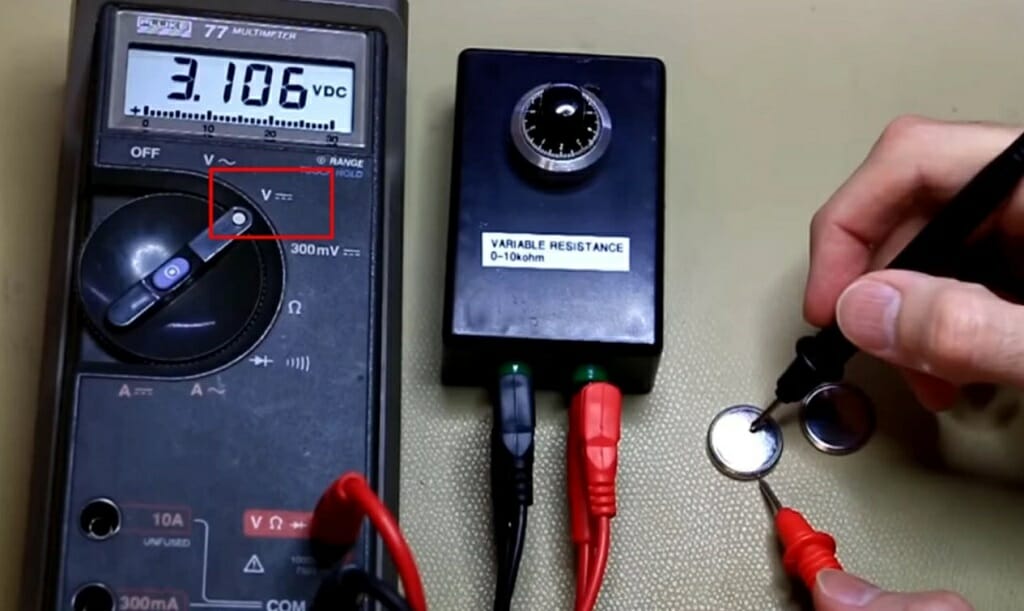
First, set the multimeter to DC voltage settings.
Step 2 – Connect the Variable Resistance Box to the Multimeter
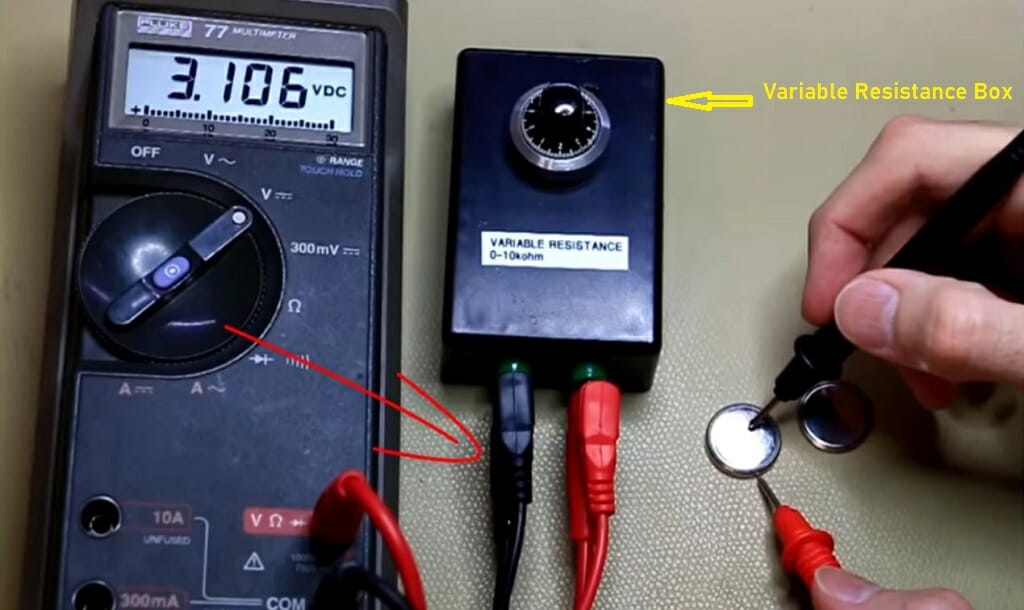
Now, use red and black connectors to connect the multimeter and the variable resistance box.
Step 3 – Set the Resistance
Next, set the variable resistance box to 4.7KΩ. As mentioned earlier, this resistance level might vary according to the type and size of the watch battery.
Step 4 – Placing Leads
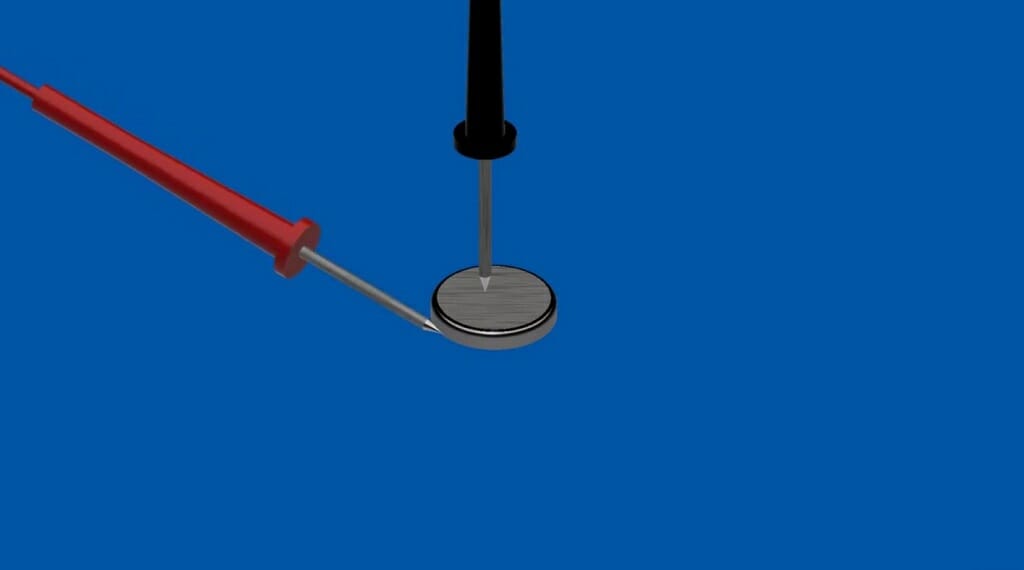
Then, connect the resistance box’s red lead to the positive side of the watch battery. Connect the resistance box’s black lead to the negative side of the battery.
Step 5 – Understanding the Readings
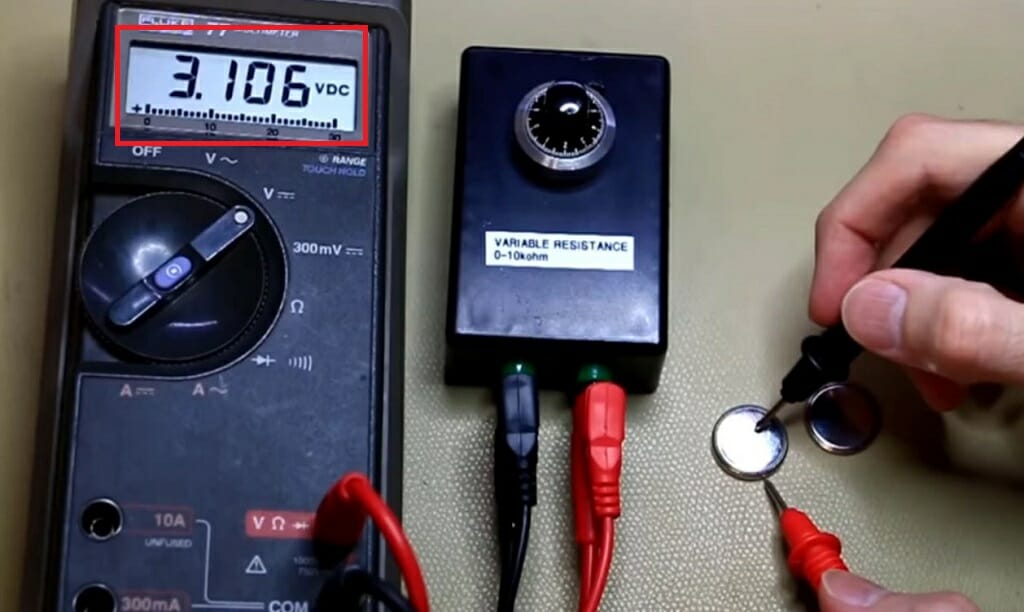
Finally, it is time to check the readings. If the reading is close to 3V, the battery is in good health. If the reading is below 2.8V, the battery is not good.
Keep in mind: You can apply the same process to a Silver Oxide or Alkaline battery without much trouble. But, remember initial voltages of Silver Oxide and Alkaline batteries are different compared to the above demonstration.
Wrapping Up
Whatever the battery type or the size, always remember to check the voltage according to the above testing processes. When you test a battery with a load, it will give a good idea of how the particular battery reacts to a load. So, it is an excellent method to identify good watch batteries. (2)
Take a look at some of our related articles below.
- How to test battery with multimeter
- Multimeter 9v batter test
- How to use a multimeter to test voltage of live wires
References
(1) battery – https://www.britannica.com/technology/battery-electronics
(2) good watch – https://www.gq.com/story/best-watch-brands
Video Reference
